Athyrium niponicum 'Red Beauty' Painted FernHeight: 1' average mature height Hardiness Zones: 4-8 Find my zone Aspect: full shade to half shade
Size Availability
Painted Japanese Ferns are the most colorful of all the hardy ferns and 'Red Beauty' provides exceptional red centers with purple and silver along the stems and frond tips. Like other Painted Ferns 'Red Beauty' will spread slowly in good organic soil and form a dense mat of colorful foliage, especially when given some morning sun. The darkest colors will typically be on the new growth with lighter shades on the older fronds, providing two tones of color in a single plant. Fertilizing with a slow release pellet such as Osmocote each spring helps keep plants producing new growth all summer long and maintains intriguing color through the entire season.Out of season.
Our main crop of most plants is available starting in late fall.
Additional batches of plugs and quarts are usually added in May.
Many of our plants are propagated in limited quantities and can sell out quickly when posted, get on the notification list below so you don't miss out. Add your email to be notified as soon as we have them back in stock:
This does NOT subscribe your email to any mailing lists, our system will only send an inventory notification message.
No shade garden is complete without at least one Painted Fern but planting these ferns look their absolute best when planted in mass and bordered by particularly dark green plants like the Male Fern (see picture below).
Planting Instructions
Painted Ferns don't produce an above ground crown like most other ferns but instead have an underground network of rhizomes that produce individual fronds, similar to the Western Licorice Fern. Because these ferns are shipped dormant when the fronds have died back for the winter some gardeners are unsure of which part of the fern should be placed up. The side that faces up will usually have small buds that will erupt into the new fronds in the spring and this is the side that should face up, bury it about half an inch under the soil line. Spread the roots out so they are not all clumped together as much as possible and water well after covering the plant with soil.
Watering and Soil
Ferns prefer to have consistent water through the summer but avoid keeping the ground too wet - lightly moist is ideal. If you are planting ferns in poor soil or boggy locations you can pile up shredded landscaping bark or aged compost and plant directly in that. Painted Ferns naturally grow in decades or centuries worth of decaying fallen needles and branches and don't actually need to grow directly in the soil. Just keep in mind that fresh materials consume a lot of nitrogen as they decompose so adding fertilizer each year ensures the plants will have access to enough to grow to their full potential. Organic matter dries out faster than soil and often doesn't absorb water again very well after drying out completely so drip systems or regular watering greatly improve water retention.
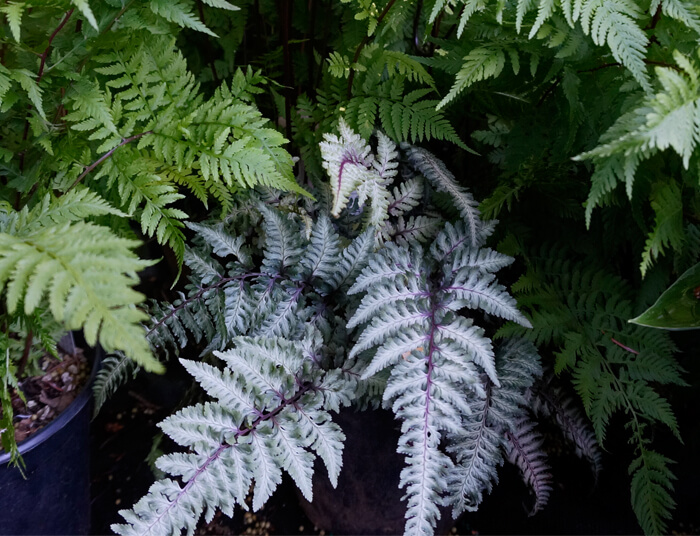 'Red Beauty' Painted Ferns look best when planted against green plants, including other ferns. 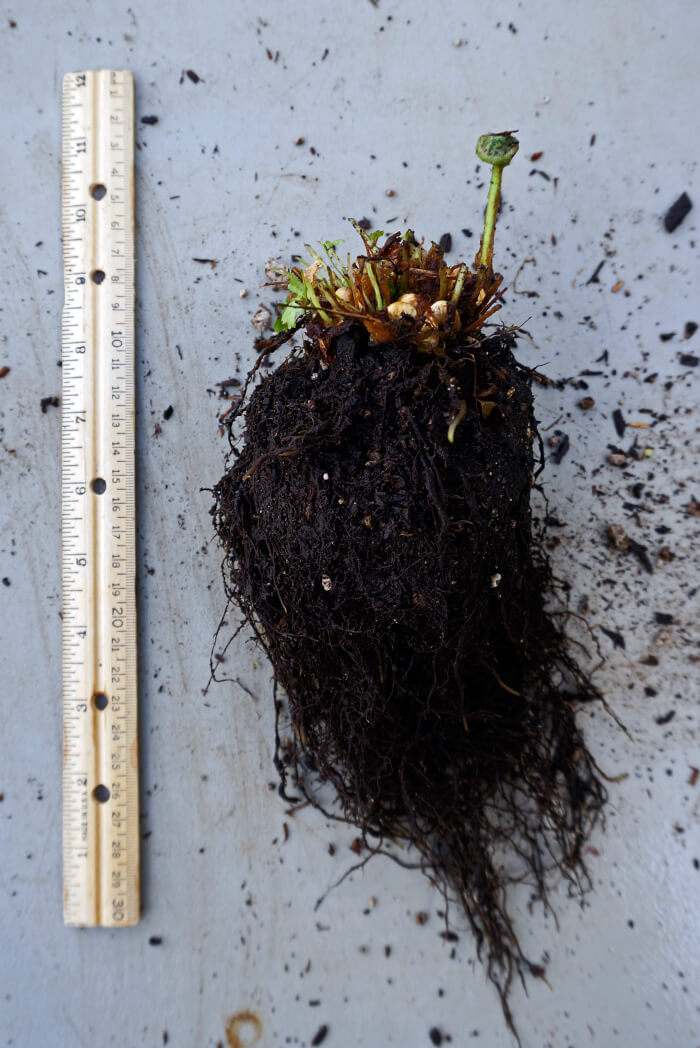 Deciduous ferns are shipped as dense root clumps with 2-3 growing crowns each. Packing Plants For ShippingMost of our plants are shipped bare root while they are dormant from late November through April and ship via the U.S. Postal Service. Bamboo plants can be shipped in their containers year-round by UPS.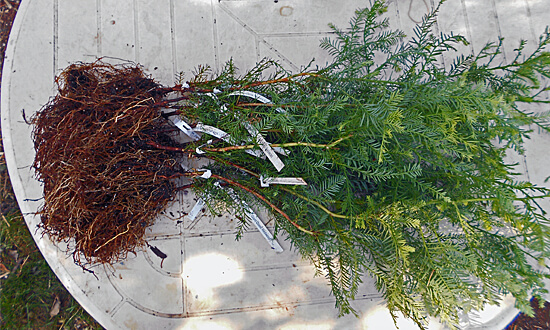 Bare root plants are soaked and wrapped together in bundles. ictured are 10x 24 inch tall Coast Redwoods. 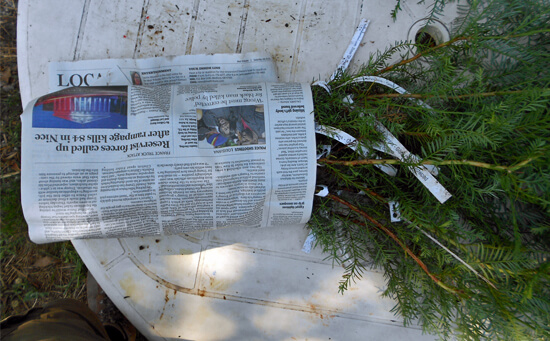 The bundled plants are wrapped in paper and labeled by variety. 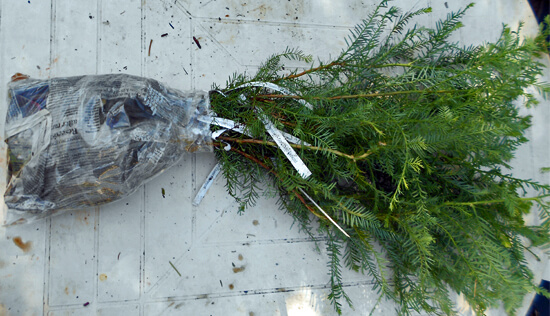 The bundle is wetted and bagged. 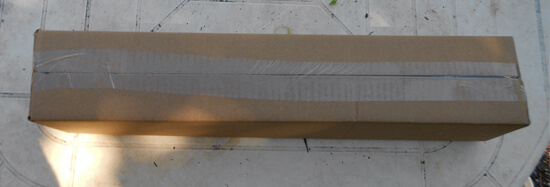 Bundles of plants are secured in long boxes. Pruning and Plant SizesWe prune both the tops and the roots of our plants at least once per year while they are growing in our nursery to ensure they develop a strong, dense form. Regular annual pruning goes a long way to ensure a healthy branching structure and this is often a missed step in many nurseries. Pruning a plant back hard after it has been neglected pruning-wise often results in an irregular branch habit or multiple leaders so we prune early and regularly instead. We also prune the roots of our plants while they are dormant which causes them to produce a much more branched structure and helps to elimate tangled masses that hinder future development. Plants that have been root pruned establish themselves much more quickly than root bound plants. Generally, hardwood plants will be pruned in the winter and conifers will be pruned in the summer.Before shipping plants we prune the tops and roots one last time. Conifers will usually have very little pruning except to balance out long branches. Shrubs are usually pruned to around 1-2 feet tall to encourage low branch development and small to medium sized trees are usually pruned to around 36-40 inches. Pruning trees at this height encourages dominant branches to begin forming around 3 feet from the ground which typically looks the best in most situations. However, if you want a tree to have branching start higher (some city codes require trees to not branch below 4 feet) we have longer boxes available. To request taller trees please contact us at least three days before your ship date. Depending on your location and the shipping routes there may be a fee for oversize package handling (usually about $15 for a 60 inch box). 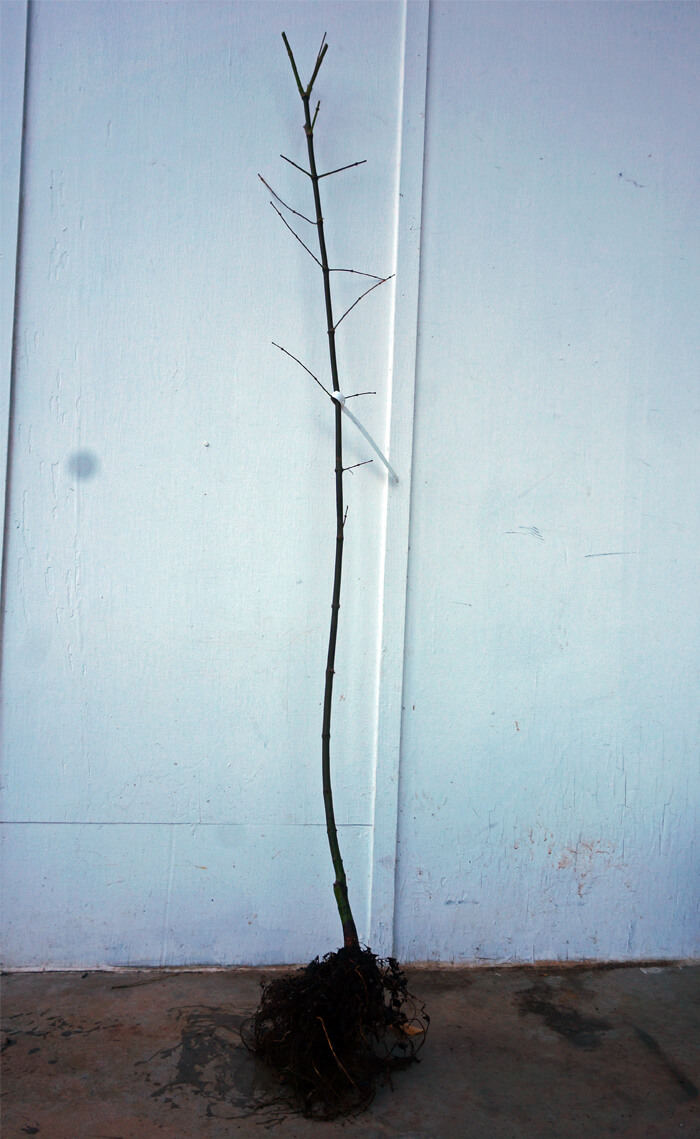 Tall trees (Oaks, Ginkgo, large Maples, etc.) are pruned to 40 inches to encourage crown development from about 36 inches and up 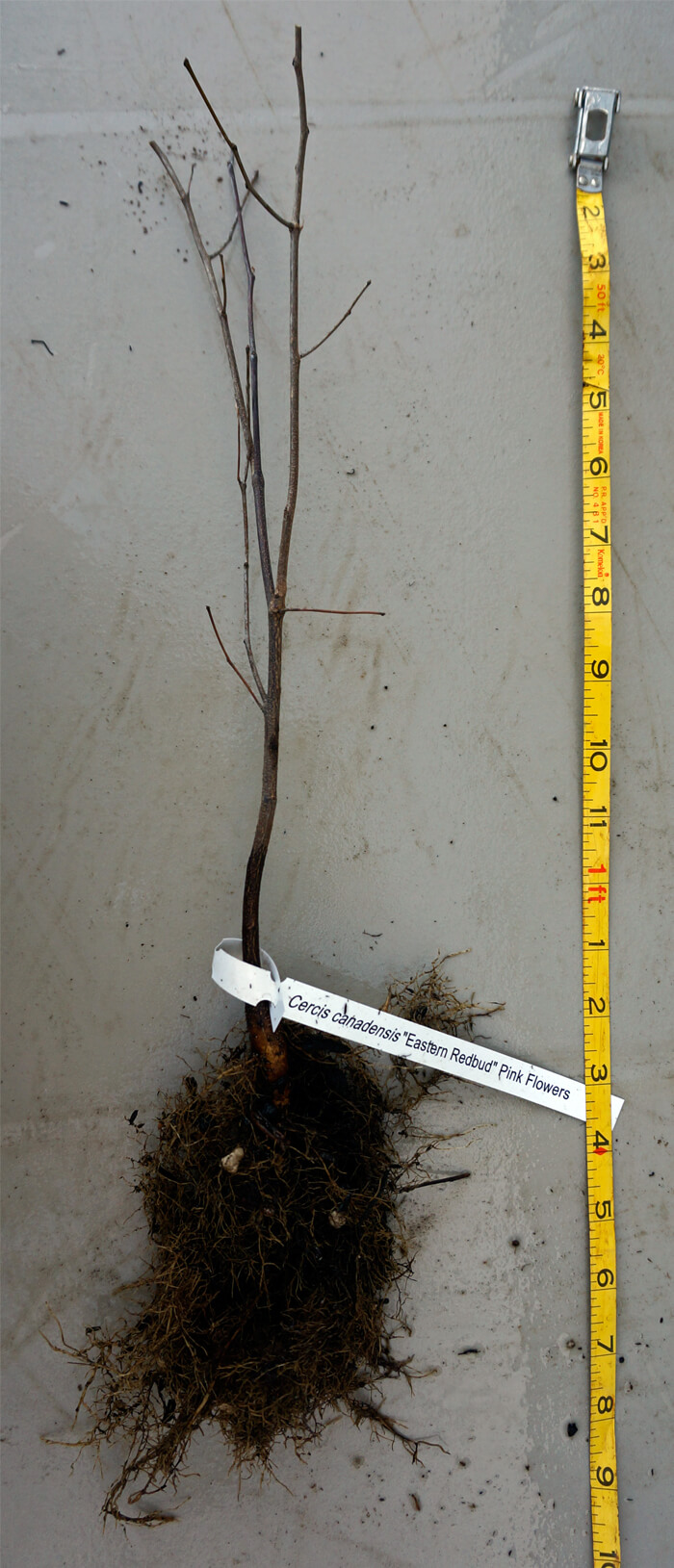 Small and medium trees (short Maples, Redbuds, Stewartia, etc.) are pruned 10-20 inches above the prune line from last year 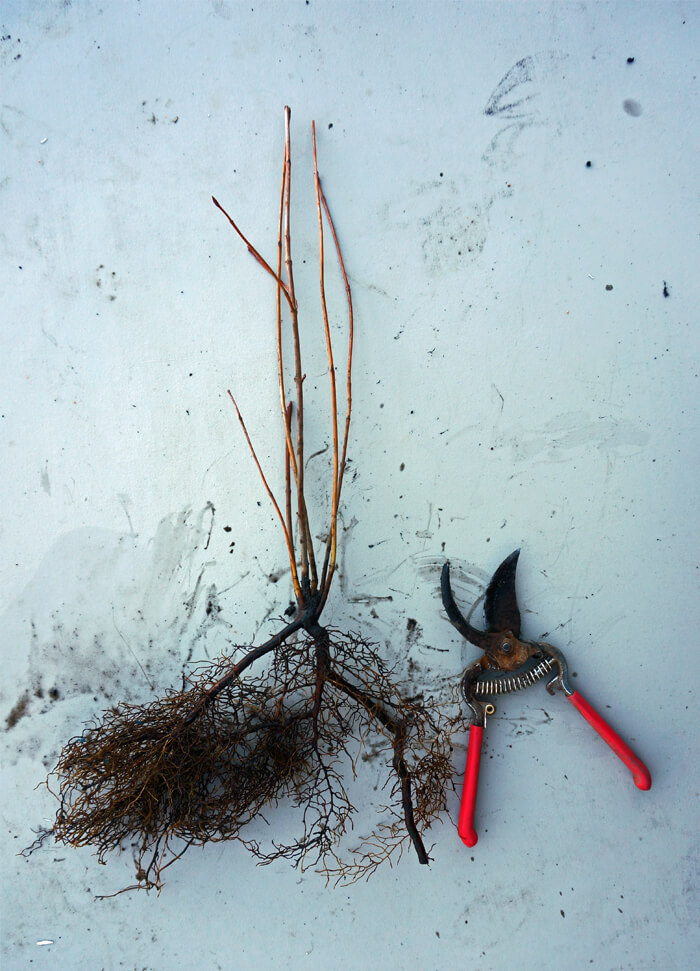 Shrubs (Weigela, Hydrangea, Viburnum, etc.) are pruned to 18 inches tall and root pruned one last time 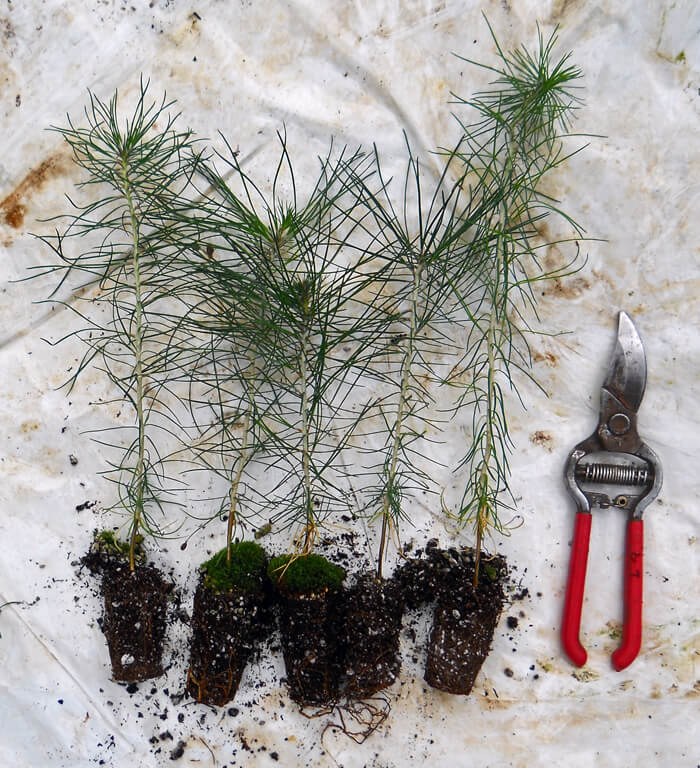 Small plug size Bamboo Plants Are Shipped In Their ContainersBamboo roots are not flexible and so plants have to be shipped in their containers. These plants are heavier and are shipped separately from bare root plants. Because they are potted they can handle longer transit times so can ship via UPS Ground instead of USPS Air Mail. Potted plants can also be shipped year-round.We regularly top our 1 gallon bamboo plants at 24-30 inches tall throughout the growing season. This results in dense, bushy foliage while allowing for economical shipping. From this size most running species will grow to 5-6 feet tall in the first spring and clumping species will usually grow to 4-5 feet tall. 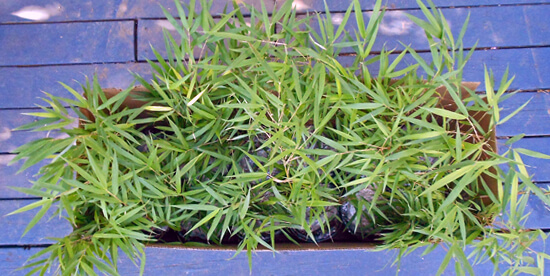 1 gallon bamboo plants strapped in and ready to be sealed. Unpacking Bare Root PlantsYou will be sent tracking details as soon as your plants are shipped. Unpack your plants as quickly as possible after they are delivered. We use two types of boxes, side-sealing and top-sealing. For boxes that are taped along the whole length you can cut the tape on either side and remove the plant bundles by cutting the tape holding the bundle to the bottom. For boxes that are sealed on the top and bottom, it is easiet to open the bottom of the box (the shipping label is at the top) and pull the bundle of plants out straight out. Check that the box is empty as there can be a second bundle of plants stuck towards the top.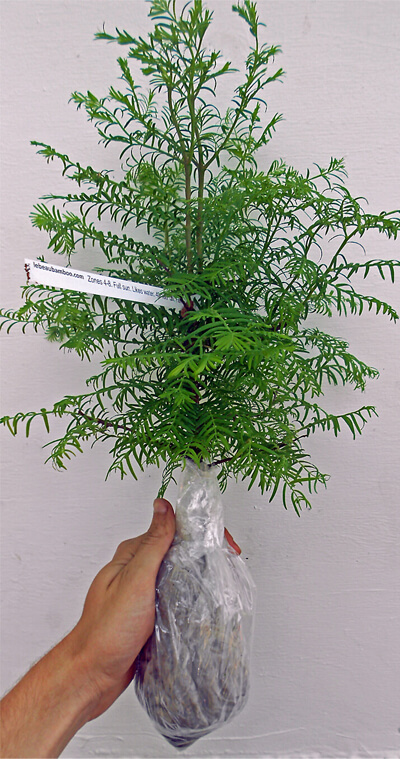 A bundle of trees. What if I am not able to plant right away?You can usually leave the plants in their shipping container unopened for 1-2 days if there were no shipping delays and you have received your plants from late November through February. Plants shipped when it is warmer can't stay in their packages for as long. |
Size Availability
Out of season.
Our main crop of most plants is available starting in late fall.
Additional batches of plugs and quarts are usually added in May.
Many of our plants are propagated in limited quantities and can sell out quickly when posted, get on the notification list below so you don't miss out. Add your email to be notified as soon as we have them back in stock:
This does NOT subscribe your email to any mailing lists, our system will only send an inventory notification message.
|

